Hydroponic gardeners understand the significance of strong plant roots. It’s the roots’ job to take in nutrients and keep the plant healthy, and they play a major role in optimizing your harvest.
On the other hand, nutrient shortages and other issues can result from roots that have become overgrown or harmed. The process of root pruning is used to address this issue.
But, can you trim roots in hydroponics, and if so, how is this accomplished?
The short answer is yes, you can trim roots in your hydroponic system, but you need to be little careful while performing this task.
This piece will explain why and how to prune the roots of your hydroponic plants so that they thrive and produce abundant fruit.
Whether you’re an experienced hydroponic grower or just getting your feet wet, the advice in this piece will help you keep your plants’ roots strong and your harvest abundant.
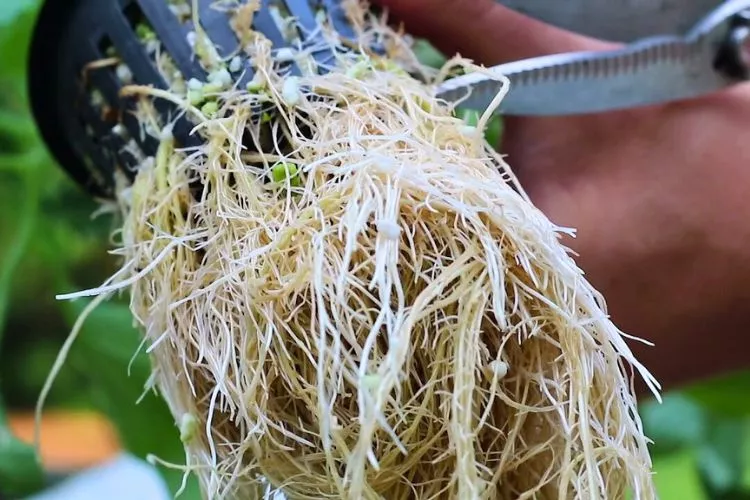
Table of Contents
Can you trim roots in hydroponics?
Yes, you can trim roots in hydroponics! Root trimming is a common and effective practice among hydroponic gardeners to maintain healthy root-to-shoot ratios, prevent nutrient deficiencies, and encourage stronger and more productive plants.
When roots become overgrown or damaged, they can block nutrient uptake and cause problems within your hydroponic system.
Trimming away damaged or overgrown roots can promote new growth and better nutrient uptake, leading to healthier and more productive plants.
However, it’s important to do it correctly and with the right techniques to avoid harming your plants. So, while root trimming can be a powerful tool for hydroponic gardening success, it’s important to research and follows best practices to ensure optimal results.
Root Trimming in Hydroponics
Hydroponic plant health and productivity depend on regular root pruning. Root pruning is a must in hydroponics, but what is it, and why is it done?
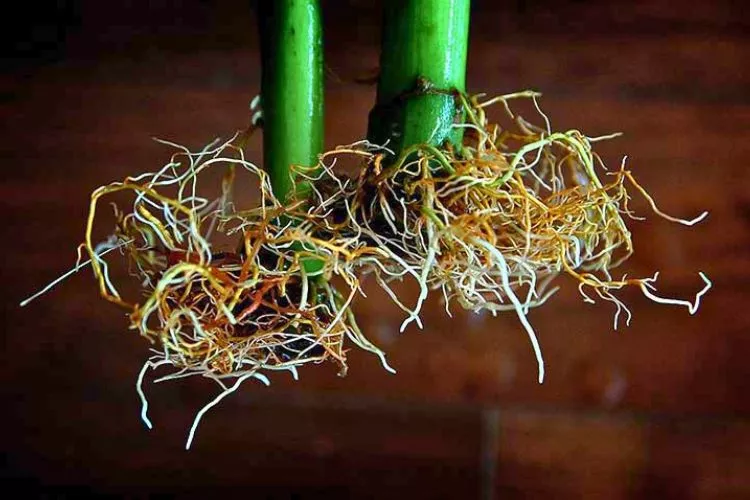
What is root trimming?
Simply put, root trimming involves selectively cutting away parts of a plant’s roots to promote healthy growth and nutrient uptake.
There are a few techniques for root trimming in hydroponics, including air pruning, which involves exposing the roots to air to stimulate new growth, and manual trimming, which involves using scissors or pruning shears to cut away overgrown or damaged roots.
Why is root trimming necessary in hydroponics?
Roots that develop too large for the hydroponic system can obstruct the flow of nutrients and water, resulting in bad growth and harvests. There are several potential reasons for this:
- First, when roots become too long or dense, they can block the flow of nutrients and water through your hydroponic system, leading to nutrient deficiencies and poor plant growth. This is especially true in systems that use smaller pipes or channels, as even a small blockage can greatly impact nutrient flow.
- Second, overgrown roots can also compete for nutrients, leading to imbalances and deficiencies within your hydroponic system. This can be particularly problematic in systems with limited nutrient solutions, as there may not be enough nutrients if the roots become overgrown.
- Finally, overgrown roots can also create an environment conducive to disease and root rot. When roots become too long or dense, they can create pockets of stagnant water that are perfect breeding grounds for harmful bacteria and fungi. This can lead to root rot, quickly spreading throughout your hydroponic system and causing widespread plant damage or death.
Trimming damaged or overgrown roots can ensure your plants get the nutrients they need to thrive. This practice also promotes a healthy root-to-shoot ratio, crucial for plant stability and growth.
Benefits of root trimming
What, if any, advantages do root pruning have in hydroponics? First of all, it helps the plant’s roots flourish, lowering the likelihood of illness.
Roots can be removed if they are diseased or injured to stop the spread of disease and encourage new root development. Aside from improving harvests and plant health in general, root trimming also makes plants tougher and more fruitful.
When to trim roots in hydroponics?
One sign that roots may need trimming is when you notice slow growth or discoloration in your plants. This can indicate that the roots are not absorbing nutrients properly, which may be due to overgrowth or blockages within your hydroponic system.
You may also notice roots circling around the base of your plant or growing out of the bottom of your hydroponic container, which can also be a sign that they are becoming overgrown and need to be trimmed.
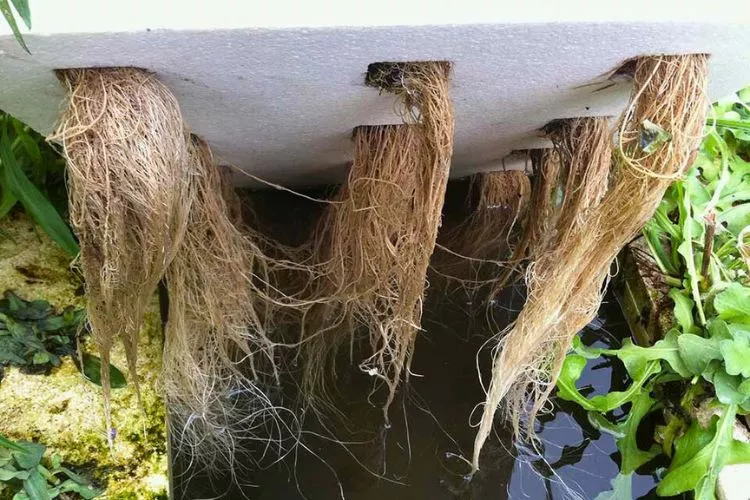
There are a few things to consider when deciding what time of day is ideal for root pruning in hydroponics. Roots are easier to manage when your plants are less stressed, so it’s best to prune them in the early morning or late evening when temperatures are typically lower.
Because of this, the plants are less likely to suffer from stress or harm and will have a speedier recovery after being trimmed.
How to Trim Roots in Hydroponics?
Since we’ve established why root pruning is so crucial in hydroponics, we can move on to the specifics of performing the task. To assist you in getting going, here is a detailed tutorial:
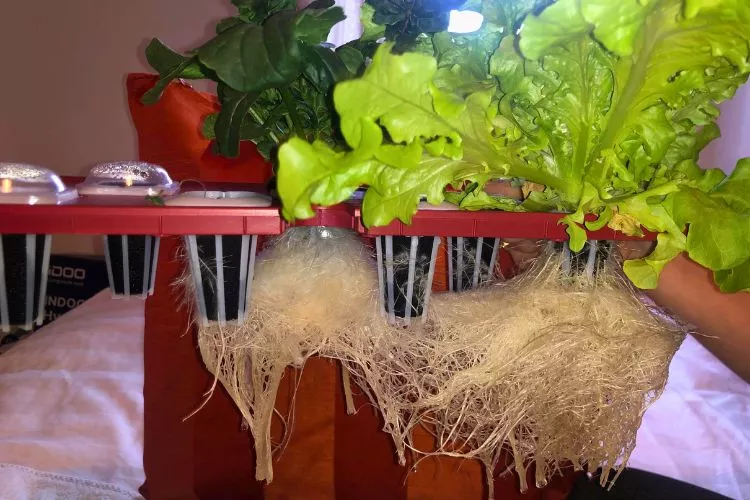
Tools needed for root trimming
- Scissors or pruning shears
- Clean, sharp knife or blade
- Clean, disinfected work surface
- Rubbing alcohol or hydrogen peroxide for disinfection
Preparing the plants for root trimming
- Turn off the water pump or flow system to prevent water from flowing through the roots during trimming.
- Remove the plants from the hydroponic system and place them on a clean, disinfected work surface.
- Rinse the roots gently with lukewarm water to remove debris or loose soil.
Step-by-step guide on how to trim roots in hydroponics
- Carefully inspect the roots to find any excessive or injured areas that must be pruned away.
- To remove diseased or excessive roots, cut them with blades or pruners. To encourage healthy regrowth, use clean, sharp instruments and trim the roots at a small inclination.
- Carefully cut out the overgrown or damaged portions of bigger roots with a clear, pointed knife or blade.
- Remove any excess dirt or residue from the roots by rinsing them in lukewarm water.
How much of the root to trim?
The amount of root to trim depends on the severity of the overgrowth or damage. Generally, it’s best to trim away no more than 25-30% of the total root mass at one time to avoid stressing the plant too much.
Techniques for root trimming
Roots can be trimmed in a few various ways, each with its own advantages and drawbacks based on the plant species and your personal preference. Methods that are typically used include:
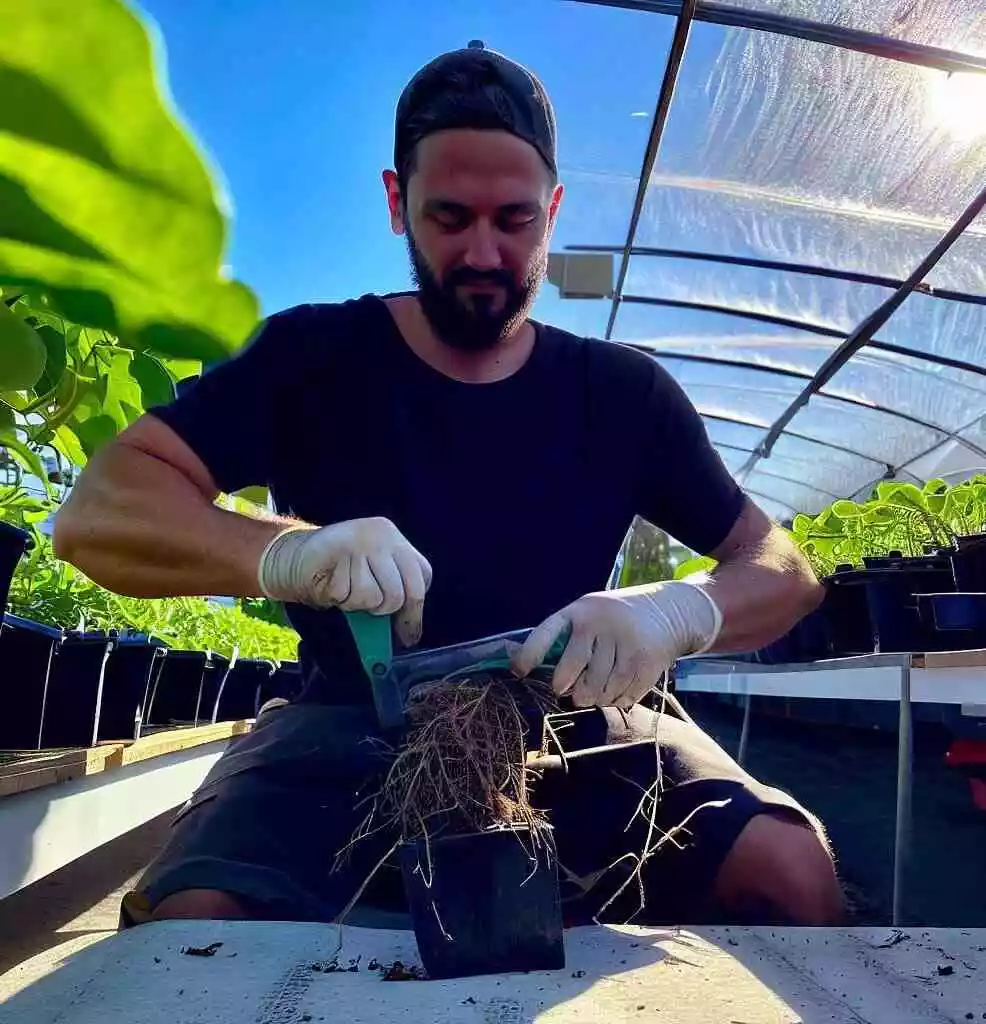
- Air pruning: The air trimming method promotes new development and limits overcrowding by allowing air to reach the roots. Roots are allowed to develop to the rim of a pot or receptacle, where they are exposed to air and eventually dry out. New, robust root growth is prompted, which can boost the plant’s ability to absorb nutrients and thrive.
- Manual trimming: Roots that are diseased or overgrown can be cut back carefully with a pair of pruning tools or blades during manual trimming. This method is more accurate and gives you more leeway in deciding how much root material to cut away. Using clean, sharp instruments is essential when physically trimming roots to prevent disease and harm to the plant.
Aftercare for the trimmed plants
- Rinse the roots thoroughly with lukewarm water to remove debris or loose soil.
- Replant the trimmed plants in fresh hydroponic solution, properly positioning the roots.
- Turn the water pump or flow system back on and monitor the plants carefully for the first few days to ensure they recover properly.
With these tools, techniques, and tips in mind, you should be able to confidently trim your hydroponic plant roots and promote healthy growth and nutrient uptake.
Pro Tips for Root Trimming in Hydroponics
Now that you know why and how to trim the roots of your hydroponic plants, here are some expert suggestions to maximize your results:
Tips for healthy root growth
- Ensure proper water and nutrient uptake by maintaining a balanced hydroponic solution with the correct pH and nutrient levels.
- Use quality grow media such as Rockwool or coconut coir to promote healthy root growth.
- Use root-promoting additives such as mycorrhizal fungi to encourage healthy root growth.
Maintaining a clean hydroponic system
- Hydroponic systems can quickly become infested with dangerous germs and fungi if not properly maintained.
- Use a filter with a small mesh to keep dirt and sediment from clogging your system and blocking water movement.
Preventing root rot
- Avoid waterlogging the plant’s roots, which can invite disease-causing bacteria or fungus.
- Keep an eye on the hydroponic system’s heat and moisture levels; these factors can encourage the development of potentially hazardous bacteria and fungi.
Avoiding over-trimming
- Avoid trimming more than 25-30% of the total root mass at once to avoid stressing the plant too much.
- Monitor your plants carefully after trimming to ensure they recover properly and not show signs of stress or shock.
Frequently Asked Questions (FAQs)
Can root trimming harm the plants?
Root trimming can be beneficial if done properly, but over-trimming or improper techniques can harm the plants.
How often should you trim the roots in hydroponics?
The frequency of root trimming will depend on the specific needs of your plants, but generally, it is recommended to trim every 4-6 weeks.
Can you propagate plants from trimmed roots?
Some plants can be propagated from trimmed roots by placing them in water or rooting hormone until new growth appears.
Can you reuse the trimmed roots in hydroponics?
Reusing trimmed roots in hydroponics is possible, but they should be cleaned and disinfected thoroughly to avoid introducing harmful bacteria or fungi to the system.
Conclusion:
As a result, root pruning is a must for hydroponics to keep the roots in good condition. You can maximize your plants’ nutrition absorption and production by encouraging strong root development.
Success in a hydroponic garden can be ensured with the right methods and constant care and attention. It is our sincere hope that you have found this manual instructive.
Our website contains articles on related subjects. Please revisit us shortly to read further updates.


